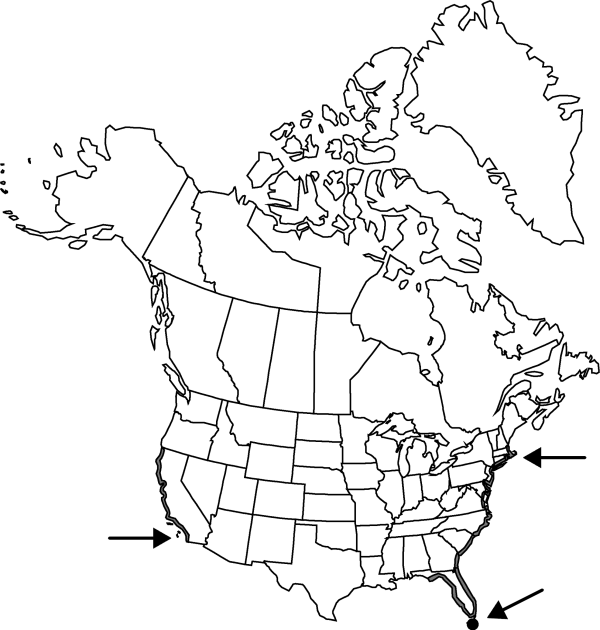Sarcocornia pacifica
Bot. J. Linn. Soc. 75: 369. 1978.
Woody stems erect or procumbent, creeping and sometimes rooting at base, 10–50 cm; stems sparingly to much-branched, younger branches with fleshy segments 5–20 × 2–4 mm. Terminal spikes: larger with 12–40 segments, 20–85 mm. Fertile segments: larger 2–4.5 × 2.5–3.8 mm; central flowers 1.6–2.8 × 1–2.5 mm; anthers 0.7–1 mm. Seeds 1.2–1.5 mm, pubescent; hairs curved or hooked, longer hairs 1–2 mm.
Phenology: Flowering late summer–early fall.
Habitat: Coastal salt marshes, tidal flats
Elevation: 0 m
Distribution

Calif., Conn., Del., Fla., Ga., Md., Mass., N.H., N.J., N.Y., N.C., R.I., S.C., Va., Mexico.
Discussion
Sarcocornia pacifica appears to be endemic to the Americas, although its precise delimitation and distribution are unclear. Well-grown plants can be easily recognized by the long terminal spikes, but depauperate plants are difficult to distinguish from S. perennis. The name Salicornia virginica has often been applied to this species.
Salicornia ambigua Michaux, Fl. Bor.-Amer. 1: 2. 1803, may be the earliest name for this species, although it could also be a synonym of Sarcocornia perennis. Until the taxonomy of the east-coast plants of the genus has been resolved, the application of Michaux’s binomial is uncertain.
Selected References
None.